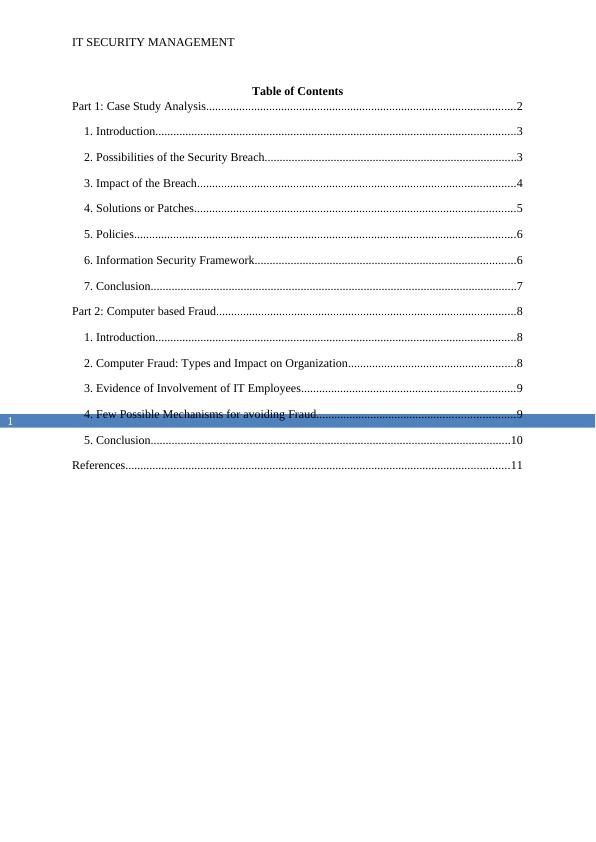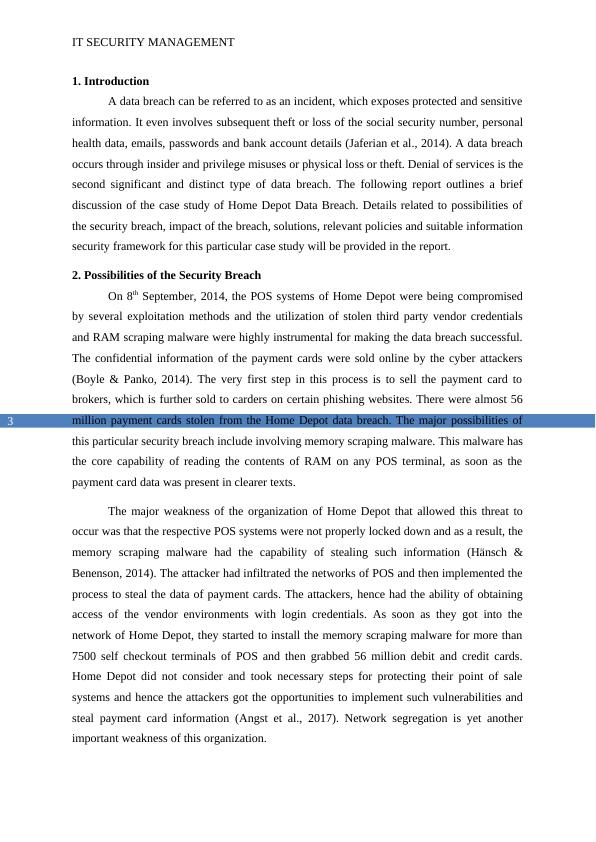IT Security Management: The Home Depot Data Breach
Analyzing the Home Depot data breach and its impact on payment card security, with a focus on the use of EMV Chip-and-PIN payment cards.
14 Pages4702 Words91 Views
Added on 2022-12-23
About This Document
This report analyzes the case study of Home Depot data breach, including the possibilities of the breach, its impact, and provides relevant solutions. It also discusses the information security framework for this particular case study.
IT Security Management: The Home Depot Data Breach
Analyzing the Home Depot data breach and its impact on payment card security, with a focus on the use of EMV Chip-and-PIN payment cards.
Added on 2022-12-23
ShareRelated Documents
End of preview
Want to access all the pages? Upload your documents or become a member.
The Home Depot Data Breach
|8
|1749
|476
Teach with Digital Technologies
|8
|1687
|32
Case Study: The Home Depot Data Breach
|7
|1152
|186
Critical Analysis on Home Depot Data Breach
|8
|1651
|61
Issue in POS Systems - Assignment
|3
|724
|290
JP Morgan Data Breach
|5
|722
|96




